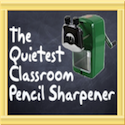Jodi:
I have done a lot of “sitting” this summer. I was house sitting for a friend a few weeks ago while they were on vacation. I was dog sitting last weekend for a friend. Now I am doing my favorite “sitting” of the summer… BLOG-sitting! I am soooo excited to be Guest Blogging for Amanda this week. As this is my first “blog-sitting” job, I went back and forth on what to write about because her blog is SO great that I wanted to make sure I had something great to share! So today I am going to share about “Before, During, and After” Reading Strategies. When I was in college, only 2 years ago, one of my reading classes really focused on Before, During, and After reading strategies to increase students' engagement with the text, as well as thinking with the text. Basically, this strategy suggests that students need to be engaged in the text before they read, while they read, and after they read.
In BEFORE READING, teachers focus students’ attention on the text to be read and facilitate strategies that cause students to
· activate and build prior knowledge,
· make predictions,
· raise questions, and
· set purposes
Students may struggle with actual reading; therefore, teachers must ensure students are able to attend to the text. DURING READING strategies require teachers to
· guide active, silent reading,
· guide oral reading for specific purposes.
Active engagement with text includes reflecting on what has been read; therefore, AFTER READING strategies result in cognitive activities that
· clarify,
· reinforce, and
· extend knowledge of content area material.
I wanted to share just a few of my favorite Before Reading strategies with you today. My favorite Before Reading strategies are; Predictogram and Word Sort.
Predictograms ask students to predict how certain words will be used in the text prior to their reading. It helps them predict what they will be reading as well as alerting them to vocabulary they will encounter as they read. It also serves as a post reading strategy because students return to their predictions after they have read and confirm or correct their predictions.
Word sorts are small group, categorizing and classifying activities. Word sorts help students activate and use their knowledge as well as providing them an opportunity to learn from and with each other. Words and phrases from materials that students will read (or have read) may be selected for use with word sorts. Twelve to twenty words or phrases should be selected; only a few words or phrases that are unfamiliar to students should be included. After words/phrases are selected, multiple copies of the complete set (one for each small group) should be made. Each set is then cut apart, resulting in a cut-up set of words/phrases for each group. Storing these in envelopes works well. An open word sort is a divergent thinking activity. There is no “right” way to sort words in an open word sort; instead, the focus is on the process students undergo as they complete the activity and on their reasons for creating groups of words. Students work in pairs or triads. Directions for an open word sort are as follows: “Working together, decide how to group these words/ phrases. You can’t put all of them in one group, nor can you have a ‘group’ for each slip of paper. Other than that, it’s up to you. Be ready to explain your decisions to the rest of us.” Give students 5 to 8 minutes to complete their groupings. Then ask volunteers to explain their groupings and the reasons for them. If the open word sort is a pre-reading activity, you might conclude by asking students what they expect to be reading about and why.
I will be sharing about my Favorite During and After reading strategies back on my blog later this week. As well as sharing some free Google Docs describing even more BDA reading strategies. Stop by and check it out!
Show Jodi some love by visiting her blog (just click the button above) and be sure to leave a comment so I can get a little email love while my toes are in the sand!























I see that you have received these before but I have really enjoyed reading your posts so I am nominating you for the One Lovely Blog and Versatile Blogger awards. Come back to my site to pick up your awards!
ReplyDeletePolka Dots and Teaching Tots
I'm awarding you the Versatile Blogger award! Check it out!
ReplyDeletehttp://mrscaricosclass.blogspot.com/2012/07/versatile-blogger-award.html
I'm your newest follower! Great stuff!!
ReplyDeleteJenna
Just diving In
Another strategy that helps my students get through a tough book is paired reading
ReplyDeletehttp://k12teacherstaffdevelopment.com/tlb/what-is-paired-reading/